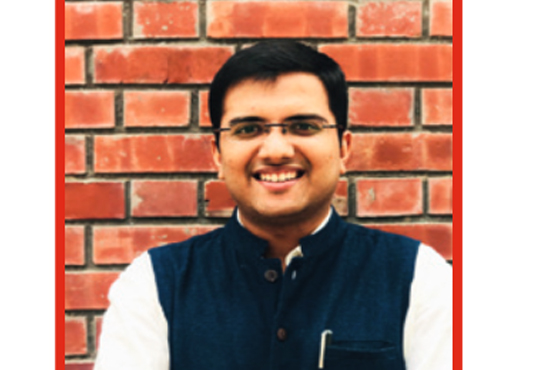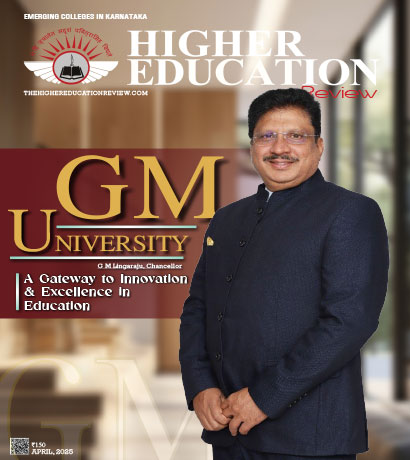Education For Impact - Nurturing An Ecosystem In Institutions

Sahil Aggarwal, Co-Founder & CEO Rishihood University
"I slept and dreamt that life was a joy. I awoke and saw that life was service. I acted and behold, service was joy", are Rabindranath Tagore's inspirational words about the purpose of life. If education is a medium to prepare students for life, Tagore's words ring a bell and encourage us to think of education beyond academics. Subject-knowledge and academic areas are crucial. But unfortunately, most of the time, they occupy the whole of the education system. We should redesign our system to create a broader impact via education.
Educational institutions are an ecosystem of intellect, energy, and ideas. They are the powerhouse of human development. They fuel the future dreams of any society. Therefore, institutions must think of themselves as an integral part of society and the nation. Institutions have immense potential to contribute to society. Similarly, society has so much to give to an institution. In this symbiotic relationship, we can nurture an ecosystem for a positive impact. Here are some ways in which social impact can become a core component in educational institutions.
"Educational institutions are an ecosystem of intellect, energy, and ideas also; they are the powerhouse of human development and they fuel the future dreams of any society."
Curriculum forms the base of academic programs. Learning outcomes are defined and the curriculum is designed to achieve those outcomes. Usually, these outcomes are only about an academic area. Without losing this objective, the curriculum can be modified in a way such that the subject learnings are applied towards social good. Every subject is relevant for society and the faculty should provide examples of how students can use academic learning for a social impact. This will not only open the minds of the students but also inspire them to study the subject because they can relate it to their surroundings.
The next step in curriculum design will be to integrate different subjects and create a holistic learning experience. As an example, a course of food technology can be integrated with other courses like microeconomics and local governance to improve the lives of the farmers. Students who get this exposure in their education will carry such ideas forward in their careers.
Further, students can be provided a significant number of internship and project opportunities in which they can start applying their knowledge. It will give them a direct experience of using academic knowledge for social and national development. Non-profit organizations, government representatives, social workers, and political leaders will be supportive of such projects. Unnat Bharat Abhiyan of the Government of India is a noteworthy example.
With the three steps mentioned above, the internal environment of an institution is already geared towards social impact. Now it can be put in the organizational structure and the institution can provide administrative support for scaling up the impact in the form of research and development centers. Most of the good institutions already have commendable centers where faculty members and students are involved in innovative research. If we add a social impact focus, the centers can align their mission to a larger societal goal. This gives a chance to the faculty members for experimenting with their ideas in the real world, apply their expertise to solve problems and involve the students in meaningful projects. Several government schemes, philanthropic grants, and CSR contributions can support such projects. It is also advisable for institutions to set up a "development office" which can work with professors to raise funds for social projects and research.
The ecosystem can be enhanced by inviting guest speakers who have done inspiring work in the development sector. The students can regularly go on field visits. During my studies at IIT Delhi, I volunteered with a student club that organized social sector visits after every semester and kept inviting social leaders for guest talks. It certainly motivated me and my friends to proactively think about the larger good.
Finally, the most important part of creating an ecosystem for impact is the "self". While working in the external world, we sometimes miss that the means to a worldly impact is the individual. As much as we have to work externally, we have to work on our internal development. As Vivekananda says, the "means" (which is the individual) has to be perfected to achieve a perfect 'end' (which is the social impact). Educational institutions are perhaps the best platform to provide this kind of a spiritual upbringing to the students. Self-awareness, reflections, emotional wellbeing are essential for a human to build a foundation for life.
Therefore, institutions must nurture an ecosystem where they can collectively work towards an impact. It uplifts the faculty members, the students, the society and the nation. An integral vision of life is the true purpose of education. It must become a guiding principle of our institutions.
Sahil Aggarwal, Co-Founder & CEO
Sahil Aggarwal is a young educationist and social entrepreneur. He is the Co-Founder of Rishihood University. After graduating from IIT Delhi, he co-founded Vision India Foundation, a nation-building initiative to create public leaders and currently serves as its honorary director. He has a keen interest in public policy, governance and diplomacy for which he also did a Masters from Jindal Global University. Sahil likes to work on strategic and institutional ideas. He has co-authored a book on public policy, co-designed a card game on politics, and keeps writing for newspapers and web magazines.
Educational institutions are an ecosystem of intellect, energy, and ideas. They are the powerhouse of human development. They fuel the future dreams of any society. Therefore, institutions must think of themselves as an integral part of society and the nation. Institutions have immense potential to contribute to society. Similarly, society has so much to give to an institution. In this symbiotic relationship, we can nurture an ecosystem for a positive impact. Here are some ways in which social impact can become a core component in educational institutions.
"Educational institutions are an ecosystem of intellect, energy, and ideas also; they are the powerhouse of human development and they fuel the future dreams of any society."
Curriculum forms the base of academic programs. Learning outcomes are defined and the curriculum is designed to achieve those outcomes. Usually, these outcomes are only about an academic area. Without losing this objective, the curriculum can be modified in a way such that the subject learnings are applied towards social good. Every subject is relevant for society and the faculty should provide examples of how students can use academic learning for a social impact. This will not only open the minds of the students but also inspire them to study the subject because they can relate it to their surroundings.
The next step in curriculum design will be to integrate different subjects and create a holistic learning experience. As an example, a course of food technology can be integrated with other courses like microeconomics and local governance to improve the lives of the farmers. Students who get this exposure in their education will carry such ideas forward in their careers.
Further, students can be provided a significant number of internship and project opportunities in which they can start applying their knowledge. It will give them a direct experience of using academic knowledge for social and national development. Non-profit organizations, government representatives, social workers, and political leaders will be supportive of such projects. Unnat Bharat Abhiyan of the Government of India is a noteworthy example.
With the three steps mentioned above, the internal environment of an institution is already geared towards social impact. Now it can be put in the organizational structure and the institution can provide administrative support for scaling up the impact in the form of research and development centers. Most of the good institutions already have commendable centers where faculty members and students are involved in innovative research. If we add a social impact focus, the centers can align their mission to a larger societal goal. This gives a chance to the faculty members for experimenting with their ideas in the real world, apply their expertise to solve problems and involve the students in meaningful projects. Several government schemes, philanthropic grants, and CSR contributions can support such projects. It is also advisable for institutions to set up a "development office" which can work with professors to raise funds for social projects and research.
The ecosystem can be enhanced by inviting guest speakers who have done inspiring work in the development sector. The students can regularly go on field visits. During my studies at IIT Delhi, I volunteered with a student club that organized social sector visits after every semester and kept inviting social leaders for guest talks. It certainly motivated me and my friends to proactively think about the larger good.
Finally, the most important part of creating an ecosystem for impact is the "self". While working in the external world, we sometimes miss that the means to a worldly impact is the individual. As much as we have to work externally, we have to work on our internal development. As Vivekananda says, the "means" (which is the individual) has to be perfected to achieve a perfect 'end' (which is the social impact). Educational institutions are perhaps the best platform to provide this kind of a spiritual upbringing to the students. Self-awareness, reflections, emotional wellbeing are essential for a human to build a foundation for life.
Therefore, institutions must nurture an ecosystem where they can collectively work towards an impact. It uplifts the faculty members, the students, the society and the nation. An integral vision of life is the true purpose of education. It must become a guiding principle of our institutions.
Sahil Aggarwal, Co-Founder & CEO
Sahil Aggarwal is a young educationist and social entrepreneur. He is the Co-Founder of Rishihood University. After graduating from IIT Delhi, he co-founded Vision India Foundation, a nation-building initiative to create public leaders and currently serves as its honorary director. He has a keen interest in public policy, governance and diplomacy for which he also did a Masters from Jindal Global University. Sahil likes to work on strategic and institutional ideas. He has co-authored a book on public policy, co-designed a card game on politics, and keeps writing for newspapers and web magazines.

